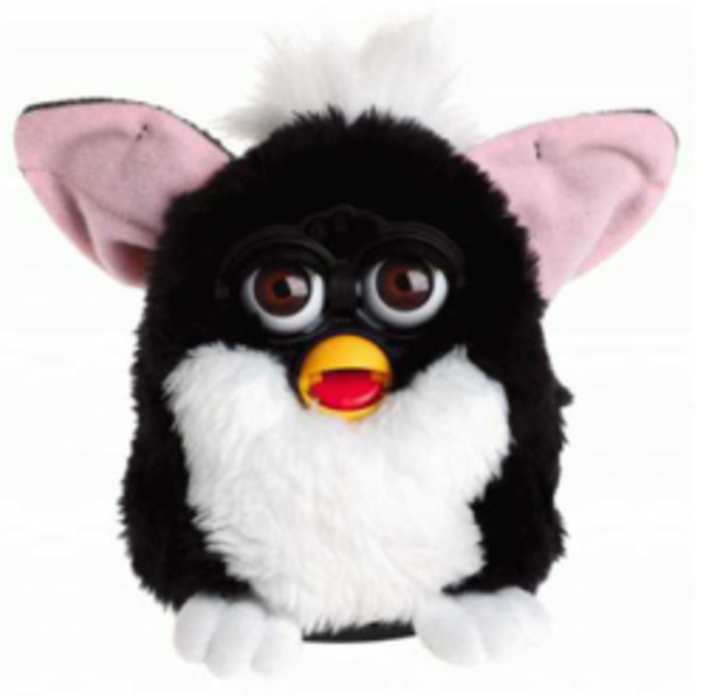As the holiday season approaches, every marketer’s dreams are filled with gumdrops and lollipops… and visions of a campaign that turns their latest product into the holiday Holy Grail.
Remember Furby, that oddball toy that was once so hot that otherwise intelligent individuals were paying up to $3,000 on eBay for a toy with a sticker price of $29.99? Nothing less than a phenomenon, the Furby was the one and only must-have toy of the 1998 holiday season. And, like everything from naturally blonde hair to flawless diamonds, part of its appeal and resulting success was in its scarcity. Stores sold out instantly; store employees hid packages in stockrooms so they could bring a Furby home to their own little boy or girl. Consumers pleaded that retail employees check “just one more time.” Parents battled over the few units that made it to a store shelf.
And surely, some kids cried ungrateful tears as the holidays landed and their promised Furby appeared forgotten by Santa or Hanukkah Harry.
As much as scarcity can equal success, if not handled appropriately, it can backfire badly—especially when a company interacts with its consumers via social media.
Disney learned this lesson this week, when consumers crashed its website and assaulted the company’s Facebook page when Disney failed to prepare for the release of its Disney Princess Designer Dolls collection. In terms of marketing, the company pulled out all the stops: Disney promoted the collection for months and got people talking, held active discussions on Facebook and created a mythos around the collection that I’m sure its marketing team was sure would make the release of the dolls this season’s Furby frenzy.
Disney was right. People wanted the dolls. Boy, did they want them. The Disney Princess Designer Doll collection made its debut on Aug. 23, starting with the Cinderella model and a plan to introduce one more character a week for a total of 10. Trouble started when Snow White went on sale Sept. 19 and sold out the same day.
Disney realized it had to respond and released a statement. Unfortunately, that statement can essentially be boiled down to “tough luck”:
“We want you to know that we read your comments on Facebook, saw your Tweets and our wonderful cast members have told us what they heard from our guests who visited our stores. Quantities of these dolls are very limited, and we realize that not everyone will be able to get the doll of their choice even with a new process in place. Our aim is to increase the possibility of our guests to obtain the dolls that they are seeking.”
In the “apology,” Disney said it would release the remaining dolls on Oct. 17 in stores; and on Oct. 18 on its website, with a one-princess-per-consumer policy.
It still wasn’t enough. Disney simply didn’t have enough dolls to meet demand, and as consumers frantically tried to purchase their favorites online, few could get past the checkout process. They turned to Facebook to make their frustrations known. Some of the comments posted are, um, not of the sort you would expect to see on a kid-oriented Facebook page.
Of those I can actually reprint, here’s a sample, this one from a mom named Claire:
This is a crock! I am never shopping at Disney again!!! I loathe Disneystore.com! I was one of the first people to purchase to Cinderella and now I can’t complete my collection! This is a debacle, debauchery! My heart is broken!!! Broken!!!!
Many people were upset that the checkout function on Disney’s website stopped working. Comments were generally along the lines of this one, from mom Nicole:
I have been on the website for a stinkin’ hour!!! At first I was getting in and now nothing. I doubt what was in my cart will be there now and I’m quite irritated! Disney did NOT think this through at all!!!
Everyone used lots and lots of exclamations in their (as of right now, 423) expressions of rage on a single wall post, and some combined this with the all-caps technique, such as dad Ricardo:
DAMN YOU! I WAS CHECKING OUT AND IT BLOCKED ME OUT!!! I AM SOBBING OVER MY COMPUTER NOW!!!!
Just a few months ago, HP made a similar mistake launching its TouchPad tablet, which, priced at $99, created the same kind of fervor as an Apple launch—except without a millennial in sight. Stores like Best Buy had to post signs on their doors saying that no TouchPads were being sold; consumers ignored the signs and demanded answers from employees. Even worse, for those trying to buy online, HP’s website had a cart glitch that served up a series of 404 errors instead of allowing a purchase. Like with Disney, consumers took their raw frustration to social networks, on which they were quite verbal and with a large vocabulary.
The biggest risk for both companies is not loss of sales; the products sold out and money was made. Rather, the experience has the potential to destroy the brand-consumer relationship, as the blog ZDNet pointed out.
Perhaps the takeaway here is that a balance needs to be struck between marketing the limited edition Must Have Toy and having the bandwidth and resources available to at least handle consumer complaints when the scarcity proves to be a problem.








